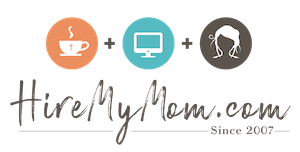Resources for Hiring Specialized Roles

Hiring in and of itself can be complex. Between creating a job post with just the right keywords and conducting interviews in a timely manner, hiring for a normal position can seem daunting. Then, if you have to hire for an extremely specialized role, the hiring process can seem ten times more complicated. Specialized roles demand a unique set of skills and expertise tailored to specific fields such as technology, healthcare, engineering, or finance. Unlike general positions, these roles require in-depth knowledge and experience, often involving complex tasks that standard roles can’t handle. If you are seeking a job like this or seeking an employee like this, how can you find the right fit? We have a few resources we wanted to share with you:
When to Hire for a Specialized Role
Signs that your business may need a specialized employee include consistently missed deadlines, the inability to meet client demands, or gaps in your team’s skill set that hinder productivity. Hiring at the right time can lead to significant benefits, such as increased operational efficiency and the ability to capitalize on new market opportunities. By filling these roles when they are most needed, you can set your business on a path of sustainable growth.
It’s essential to assess your current team’s capabilities and identify any areas where specialized skills are lacking. For instance, if your technology department struggles with advanced software development, it may be time to bring in a specialist. Additionally, consider the financial implications and potential return on investment. If the benefits of hiring a specialized role outweigh the costs, it’s a clear indicator that it’s the right move.
Exploring Resources for Hiring
At HireMyMom, we offer a fantastic course called Hiring Made Easy. This self-paced course will help you better understand when to hire, and more importantly, who to hire — such as someone who can fill a specialized role within your company. Our team is also here to support you as you work through the course, so you can always reach out to request more help in understanding what your company needs. Start Hiring Made Easy today!
When to Seek a Specialized Role
For someone who works as a virtual assistant, as an example, you may cover many different job duties from social posts to managing projects. This is a more generalized role. However, over time you may notice that you are spending more time doing certain tasks such as project management over marketing tasks. You can start to lean into this and turn your role into a more specialized one. A way to do this is by getting certified. Using the project manager example, you can be certified in project management itself or even receive certification for certain management softwares.
If you notice more of a demand for one set of skills, start to pursue further education and certifications in that area. Make sure your work experience reflects this knowledge. Then, you can start applying for more specialized roles which can help companies and give you a pay raise! Pursuing a specialization in your field can make you more marketable as companies seek subject matter experts to help them.
Resources for Job Seekers
For job seekers, we have a whole section on our website under Training & Courses available to you. You can work with an HR expert through HireMyMom, or you can look into our partnerships for help developing those specialized skills: check out VA training from The Free Mama to learn how your skills can be best leveraged in a VA position; learn how to be a real estate transaction coordinator from Christal Allen-Harrahill; discover how to start a bookkeeping business from your home with Tiffani Higgins; or head over to Freelance U for other skills you can pick up to apply to a more specialized position.
Visit our Training & Courses tab to see all we have to offer to help you find the job of your dreams!









